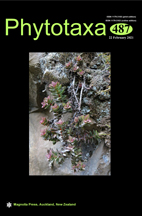Abstract
As a major component in plant evolution and reproduction, diaspores are often central to research, not only in botany, but also in zoology, ecology, and limnology. Yet, identification of these structures without the original plant is difficult and hinder the development of research in cases in which the mother plant is not known e.g. in seed bank research or studies with animals (stomach contents, feces, nests) that are associated with diaspores. This guide is a novel resource to the identification of the main species of the Pantanal’s aquatic flora, with high quality photographs of diaspores—except for grass-like Cyperaceae. Diaspores were collected from 53 species (22 families) that occur in different water bodies in the Pantanal. Photographs were organized in plates in alphabetical order of plant families according to APG IV. Among represented taxa are macroalgae (Chara and Nitella), ferns (Salvinia and Marsilea) and Angiosperms (Onagraceae (7), Fabaceae (7), Alismataceae (6), and Polygonaceae (5) presented the highest number of species). This guide also can contribute to insights into community patterns prior to disturbances, carried out through seed bank identification, important in environmental restoration work.

